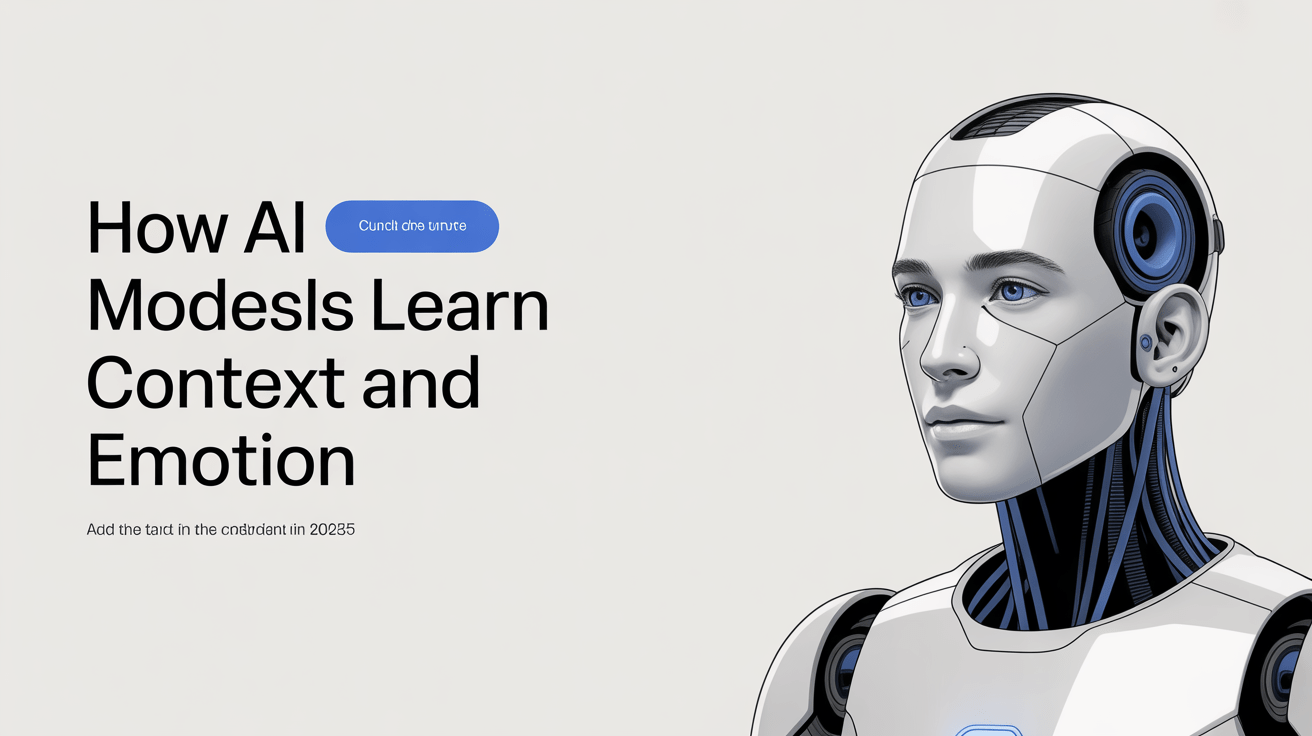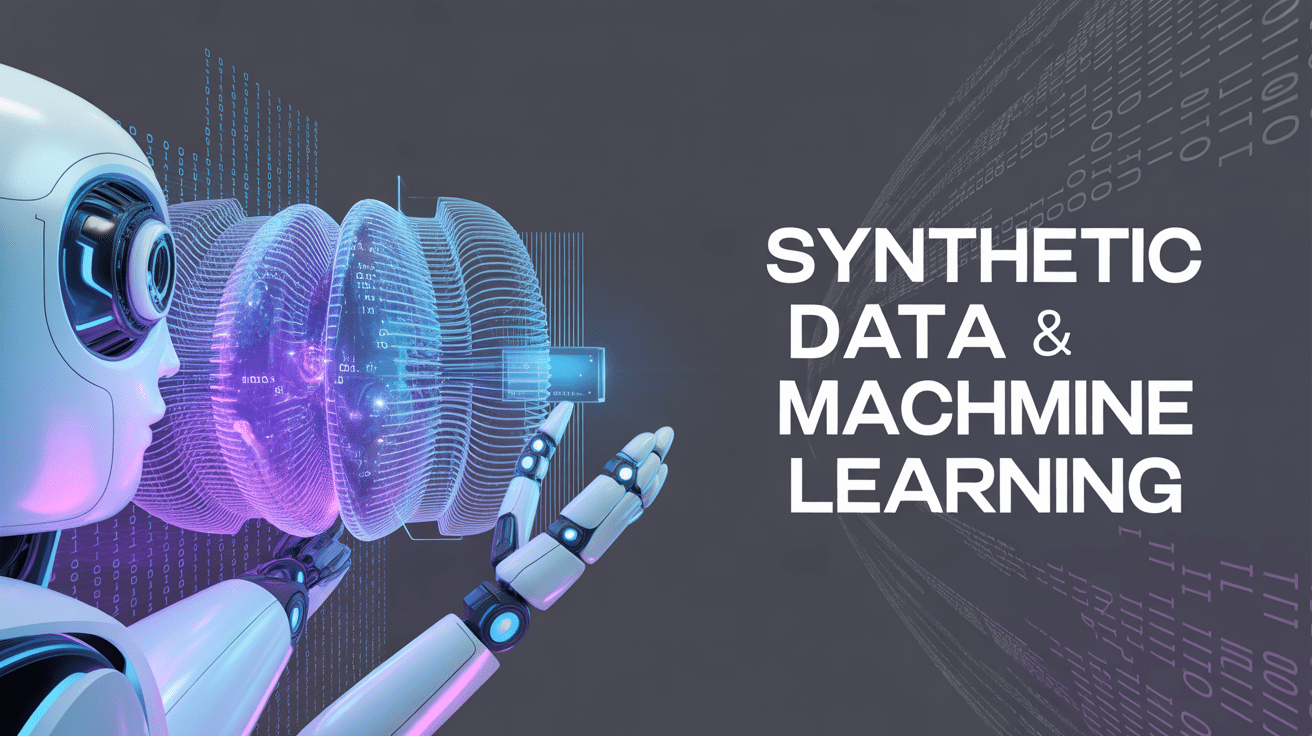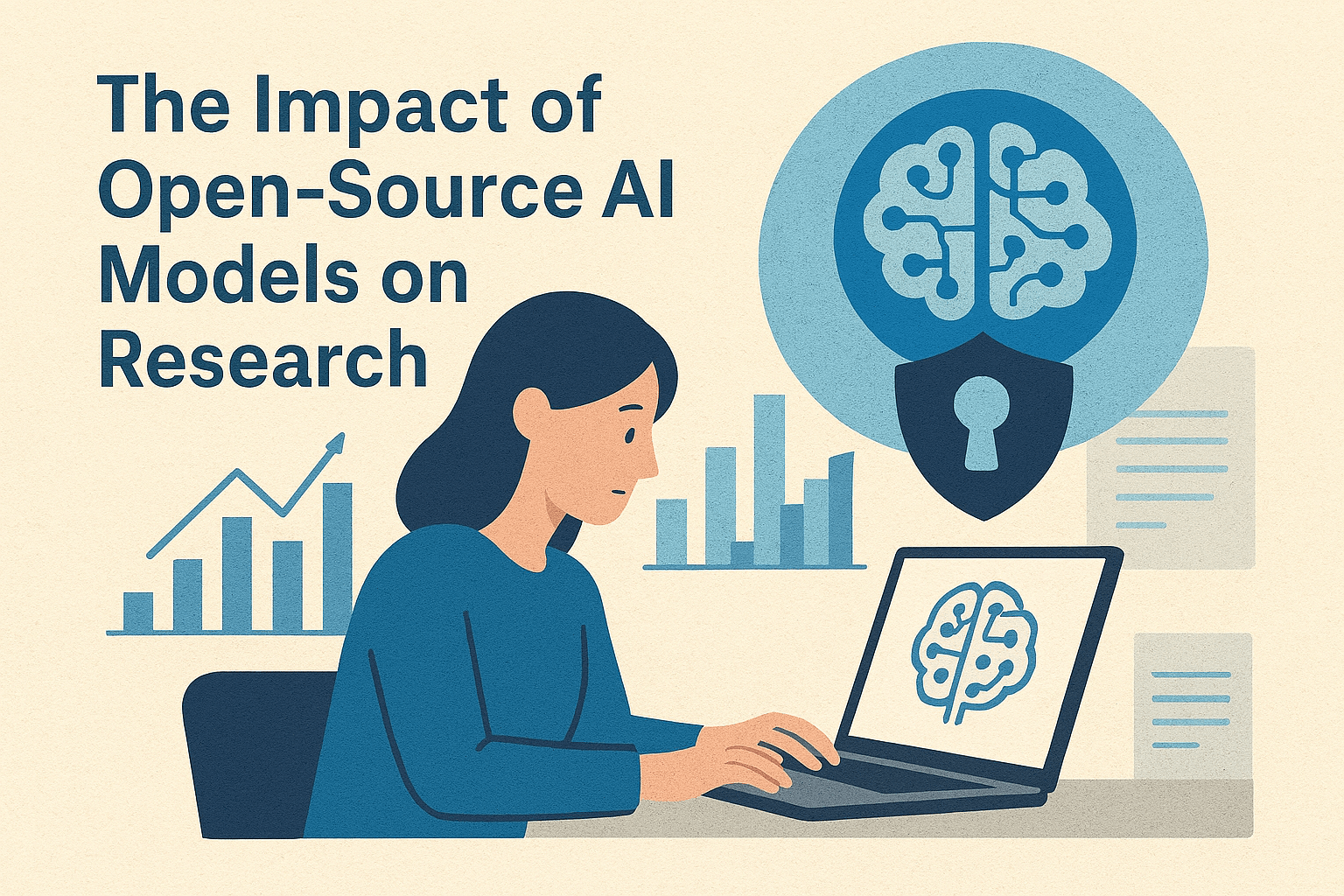
: An Investigative Analysis
In 2025, the capability of artificial intelligence (AI) models to grasp not only contextual nuances but also human emotions is reaching a transformative inflexion point. This article dives deep into the state-of-the-art methodologies, theoretical foundations, architectural advancements, and real-world industry applications that define how AI systems learn context and emotion today. By unpacking advancements in multimodal learning, pain points in natural language understanding, and emerging hybrid architectures, developers, engineers, and technology leaders will gain an authoritative outlook into the practical and research-driven facets of emotional AI.
The next-generation AI performs precise context recognition autonomously!
Evolution of Contextual Understanding in AI: From Syntax to Semantics and Beyond
From Statistical Models to Transformer Architectures
AI’s journey in mastering context began with rule-based and statistical language models that focused solely on surface-level syntax. The advent of Transformer architectures has wholly redefined context comprehension by enabling models to handle longer dependencies through attention mechanisms. This shift empowered AI to interpret semantics rather than just word co-occurrences, a fundamental requirement for capturing nuanced meanings in conversations and texts.
Context Windows and Dynamic Memory Modules
Early transformers were constrained by fixed-length context windows, limiting depth and span of context AI could hold. By 2025, dynamic memory modules and architectures like the Retrieval-Augmented Generation (RAG) and memory-augmented neural nets will allow models to access and integrate external knowledge dynamically, maintaining a continuous, evolving understanding over long dialogues and documents.
Challenges of Context Disambiguation and Polysemy
Despite architectural advances, disambiguating polysemous words and resolving coreferences in context remains challenging. Novel solutions introduce hierarchical context modelling that uses both local sentence-level and global discourse-level cues to improve precision. These hierarchical models leverage embeddings fused with syntactic and pragmatic annotations to reduce errors drastically.
Decoding Emotion: How AI Models Interpret Human Affect in 2025
Multimodal Training Fundamentals for Emotional Intelligence
Emotional AI transcends textual data by incorporating audio (voice intonations), video (facial expressions), and physiological signals (heart rate variability). Models trained on large-scale multimodal datasets-such as CMU-MOSEI and Aff-Wild2-use joint embedding spaces allowing seamless fusion of heterogeneous inputs. This integration supports a more accurate classification of emotions such as subtle sarcasm, empathy, or frustration.
Self-Supervised learning Optimizes Emotion Recognition
The scarcity of labelled emotional datasets pushed research into self-supervised learning approaches, where models learn representations by predicting missing data within various modalities. Self-supervised pretraining on unlabeled conversational data now enables models to generalise better across cultural and linguistic variations in emotion expression.
Emotion Embeddings and Sentiment Networks
Recent architectures embed emotions as continuous vectors within learned emotional latent spaces-much like word embeddings for language. Coupled with graph neural networks and sentiment propagation algorithms, this allows for capturing complex emotional dynamics and relational sentiments within text or interaction networks.
Hybrid architectures: Merging Symbolic AI with deep Learning for Contextual and Emotional Reasoning
Why Hybrid Models Matter
Purely neural solutions sometimes lack explainability and struggle with deep reasoning involving context or emotions. By integrating symbolic AI-rule-based reasoning, ontology-driven knowledge graphs with deep neural models, developers in 2025 create hybrid systems that can explicitly track and reason about context and emotions using logical constraints combined with statistical learning.
Implementations of Neuro-Symbolic AI Systems
Examples include neuro-symbolic program synthesis that enhances natural language understanding with symbolic context disambiguation and emotional logic. These systems pull from curated emotional taxonomies and context ontologies to validate or refine AI’s affective predictions, making AI feedback clearer and reliable for high-stakes use cases.
API Configuration and Tuning for Developer Adoption
Leading AI platforms now expose hyperparameters for balancing neural versus symbolic inference layers, allowing engineers to tune models for task-specific context-emotion sensitivity such as OpenAI’s context-handling API guidelines highlight best practices for injecting symbolic knowledge into prompt engineering pipelines. This adaptability accelerates adoption among startups and enterprises aiming for emotional intelligence at scale.
Multimodal Pretraining Pipelines: Data, Architectural Strategies, and Tooling
Curating Diverse Training Data for Emotive Contextual AI
Data curation is the backbone for training robust emotional and contextual models. In 2025, datasets have grown in volume and dimensionality, extending beyond text corpora to synchronised video/audio-text corpora labelled with affective states. Tools like NVIDIA’s Omniverse and Microsoft Azure’s Cognitive Services provide scalable pipelines to preprocess, annotate, and augment multimodal data.
Architectural Innovations: Cross-Modal Attention and Fusion Layers
State-of-the-art models employ specialised cross-modal attention layers that dynamically weigh inputs from different data types based on context and task. Transformer variants like perceiver IO or Flamingo (from DeepMind) showcase how to handle heterogeneous input streams natively, achieving superior emotion-context comprehension.
Distributed Training and Scalability Considerations
Training massive multimodal models demands distributed, elastic training setups that leverage GPU clusters and FPGA accelerators. Frameworks like PyTorch Lightning and Hugging Face Accelerate abstract complexity, enabling iterative tuning of context-emotion models with optimized throughput and memory usage. Low latency inference is critical for live emotion detection in customer service bots or mental health assistants.
Attention Mechanisms Tailored for Emotional Nuance and Context Switching
Hierarchical and Sparse Attention in Emotional AI Models
Conventional full self-attention is computationally expensive and can dilute focus over lengthy inputs. Hierarchical attention mechanisms first summarize local context units before propagating focus globally, useful for managing emotional shifts in conversations or narratives. Sparse attention also reduces complexity by focusing only on emotionally salient cues or context anchors.
Dynamic Context Switching and Meta-Learning Approaches
Emotional states and context evolve rapidly, requiring models to adapt in near real-time. Meta-learning and continual learning algorithms embedded within attention layers enable models to quickly switch emotional context or reweight past dialog when new information arrives, improving robustness and realtime responsiveness.
Evaluating AI’s Context and Emotion Understanding: Benchmarks and Metrics in 2025
Multidimensional Evaluation Frameworks
Evaluation now includes multi-axis benchmarks measuring not only semantic accuracy but empathetic relevance, emotional intensity recognition, and dialog engagement. Initiatives like the SuperGLUE extension for emotion and context understanding represent state-of-the-art benchmarks that push the limits of AI comprehension.
KPIs for Real-World Deployments
Organizations focus on latency, contextual recall precision, and emotion classification F1-scores. Understanding tradeoffs between these KPIs guides system architects in designing scalable, responsive applications. Below are typical KPI values for a high-performance emotion-aware conversational AI system.
Privacy and Ethical Dimensions in AI emotion and Context Learning
data Privacy challenges and Federated Learning Solutions
Personal emotional data is highly sensitive. Data collection and processing must comply with stringent regulations like GDPR and CCPA. Federated learning protocols allow decentralized training on user devices, preserving privacy by keeping raw data local and only sharing model gradients or encrypted updates.
bias Mitigation in Emotional AI Models
Emotion recognition models trained on skewed datasets risk perpetuating cultural and demographic biases. Responsible growth requires continual bias audits, balancing data diversity, and incorporating algorithmic fairness techniques such as counterfactual data augmentation and adversarial debiasing.
Transparency and User Trust
Explainable AI methods feed back interpretable emotional predictions and context rationales to end users and auditors, boosting system trustworthiness especially in critical scenarios like healthcare, finance, or criminal justice.
Industry Applications Advancing Through Context and Emotional Intelligence
Healthcare: Emotionally Adaptive Virtual Therapists
AI mental health chatbots with advanced context and emotion understanding can detect shifts in emotional tone and provide empathetic, tailored responses. These systems can escalate cases to human clinicians automatically, improving patient safety and engagement.
Customer Experience: Sentiment Analysis and Personalized Recommendations
Brands leverage AI’s emotion-context capabilities to adapt customer service chats and social media monitoring in real-time. Sentiment-aware conversational agents anticipate frustration or delight and adjust their suggesting products, messaging tone, or escalate to human agents as needed.
Creative Content Generation with Emotional Coherence
In media and advertising, AI models now generate emotionally coherent scripts, music, and visual art based on user sentiment profiles and interaction context, yielding more engaging and immersive experiences.
Fine-Tuning AI Emotion and Context Models: Best Practices for Developers
Task-Specific Data Annotation and Labeling
Fine-tuning requires carefully curated datasets annotated not only with standard emotion classes but also with contextual metadata such as speaker intent, conversational roles, and environmental variables. Employ crowdsourced and expert annotation combined with self-supervised pretraining for best results.
hyperparameter Tuning and Model Adaptation
experiment with learning rates for emotional embedding layers and cross-modal attention weights. Use early stopping based on validation metrics sensitive to both sentiment accuracy and conversational context retention. Deploy robust CI/CD pipelines integrating user feedback loops for continuous enhancement.
APIs and Integration Notes
Utilize modular APIs that abstract complex multimodal pipelines, such as Hugging Face’s Transformers API, Microsoft Azure’s Emotion API, and OpenAI’s fine-tuning interface.Pay attention to limitations in payload size for context windows in REST calls and use batching to optimize throughput.
The Future Trajectory: AI Models Beyond 2025 in Emotional and contextual Cognition
Towards Generalized Emotional AI with Self-Aware Agents
Research directions aim at developing self-aware agents capable of meta-cognition over their emotional states and context-awareness. These agents will autonomously modulate their responses factoring in long-term user relationships and evolving mental states, pushing boundaries of human-AI interaction intimacy.
Neurophysiological integrations and Affective Computing Advances
The fusion of AI with neurophysiological data streams (EEG, GSR) promises breakthrough in real-time, ultra-fine emotional sensing. This opens doors for brain-computer interfaces that respond emotionally, unlocking new modalities of human-machine collaboration.
Ethical AI as a Pillar of widespread Adoption
Embedding ethics, transparency, and inclusivity into emotional AI frameworks will not only be a regulatory requirement but a competitive differentiator. Industry-wide standards and certifications for emotional AI models are expected as the sector matures.
The next-generation AI performs precise emotional context recognition autonomously!







Thanks for sharing. I read many of your blog posts, cool, your blog is very good.